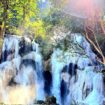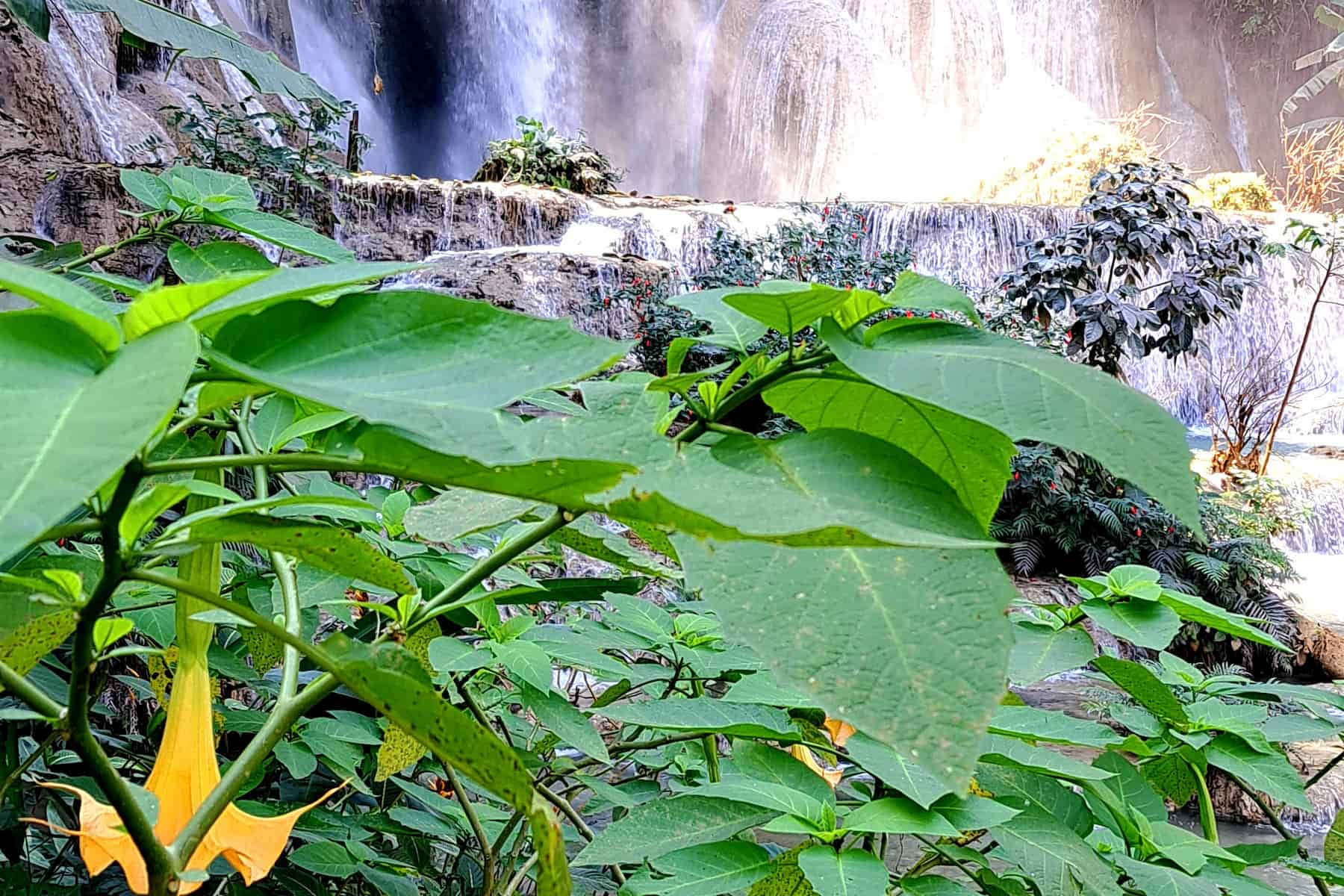
Go World Travel is reader-supported and may earn a commission from purchases made through links in this piece.
Luang Prabang Is a UNESCO World Heritage Centre
As a UNESCO World Heritage Centre, the town of Luang Prabang in Laos has done well in preserving its historical architecture and its cultural traditions. It’s best known for its signature architecture which blends traditional Lao urban architecture with that of the colonial era.
There are many temples and pagodas throughout the town which are magnificent buildings. The best example of this would be Wat Xieng Thong, whose woodwork and craftsmanship make it one of the best-preserved examples of 16th-century Buddhist craft and tradition.
Best Tips & Tools to Plan Your Trip
What to Do in Luang Prabang
I would also recommend visiting Phousi Hill. This hill is a sacred spot and has several temples around its base. It is possible to walk up to its summit, which provides excellent views over the town and the surrounding landscape. This spot is also very popular for sunset.
The traditions that Laotians have worked so hard to preserve exist not just in works of architecture or ancient holy sites, but also within the people who call this town home.
This is evident in the practice of a custom that has been done for countless years. Every morning at sunrise, the Buddhist monks of Luang Prabang begin a procession through the streets, receiving alms from the residents.
The opportunity to observe such a tradition and to see the monks in their saffron-colored robes is very memorable and can serve as a good learning experience.
Just keep in mind, this is a cultural tradition not a show for tourists. Be respectful of the monks and read up on the dos and don’ts before going to observe.
The French Connection in Luang Prabang
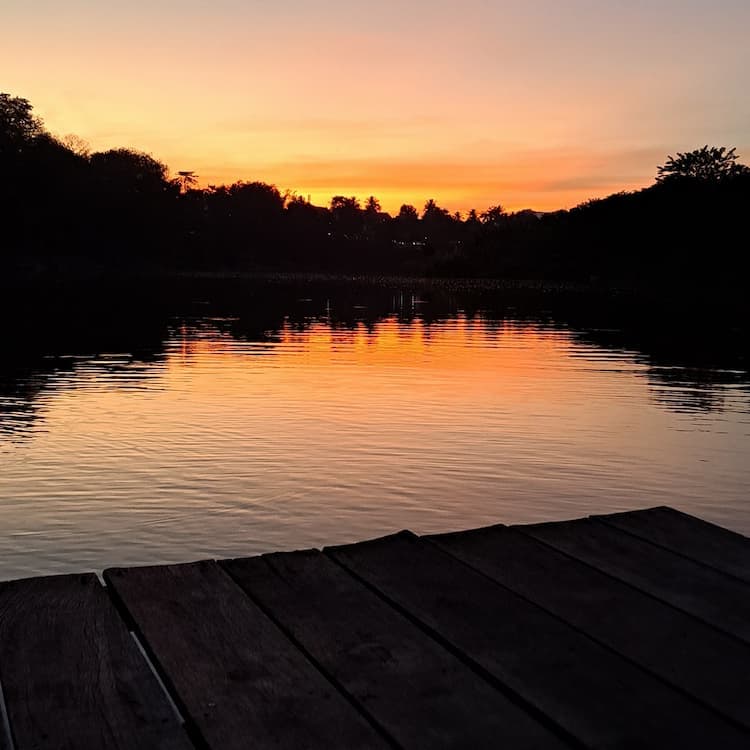
Laos was, until 1975 a colony of France, part of French Indochina and this history is still visible in Luang Prabang.
There is a noticeable French influence which is most apparent on the Luang Prabang peninsula where there are some buildings that host coffee shops and bakeries, whose architecture is a blend of traditional Lao and French colonial design features.
Along Kem Kohn Road is a beautiful representation of this blend of influences. The buildings are a mix of older colonial buildings and traditional Lao architecture. This contrast of buildings set against the backdrop of the Mekong River creates quite a scene.
Take a wander through this area of town, find a nice spot to sit and order a coffee to enjoy. Watch life go by on the Mekong and soak up the context of scenery.
In my experience, this was a great way to spend the morning.
The Night Market in Luang Prabang
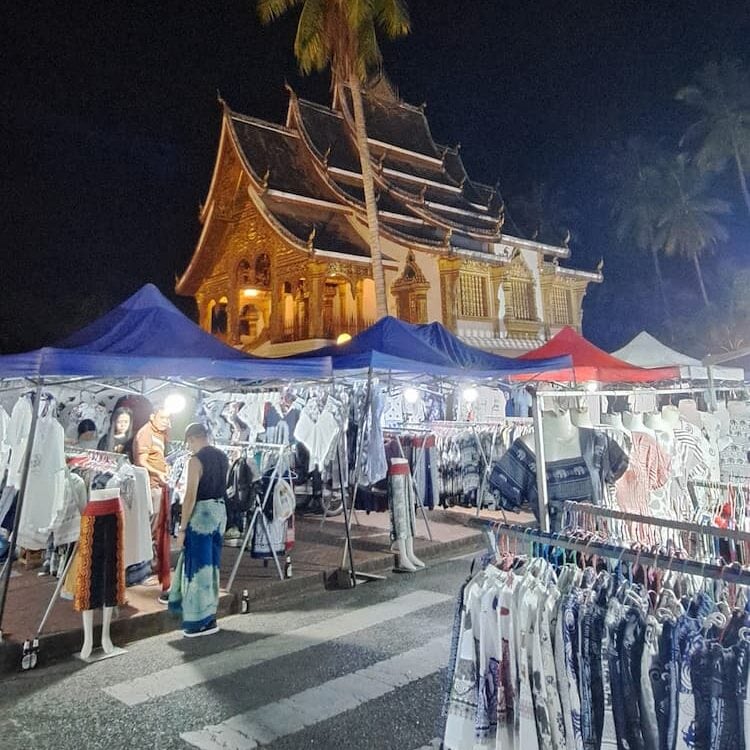
I had arrived in Luang Prabang having motorcycled through Northern Laos, where finding food proved a bit of a struggle, so I was excited to get to Luang Prabang’s night market.
It did not disappoint.
Located on Sisavangvong Road and open from 5 pm until 11 pm every night, the night market is a highlight of the town, where your taste buds can be enriched and your luggage made significantly heavier if you aren’t too careful.
The market has quite a different feel from many other night markets throughout South East Asia as it lacks the chaos that many others possess. The stallholders don’t tout their crafts and instead take a more laid-back approach to sales.
They take pride in their wares and it’s difficult to resist the temptation and not purchase some wonderfully handwoven items.
The food section of the market has a variety of different cuisines on offer that will fill you up and satisfy any cravings. For those of you, who like me, have been on the road less travelled, this feature of the market will be most welcoming. (I came here solely for the food almost every night)
Another food spot is Unio Foods Garden. Located near the top of Oupalathxiengkong Road.
This local hangout provides a good insight into Lao dishes, making it great for those who want to become more accustomed to traditional Lao cuisine.
That being said, unless you know how to handle your spice, do ask for Falang spice levels (Falang is the Lao word for foreigner) and save your mouth the feeling of being inside a furnace. The Laotains love their spice just as much as their Thai counterparts.
Cascading Water at Kuang Si Waterfalls
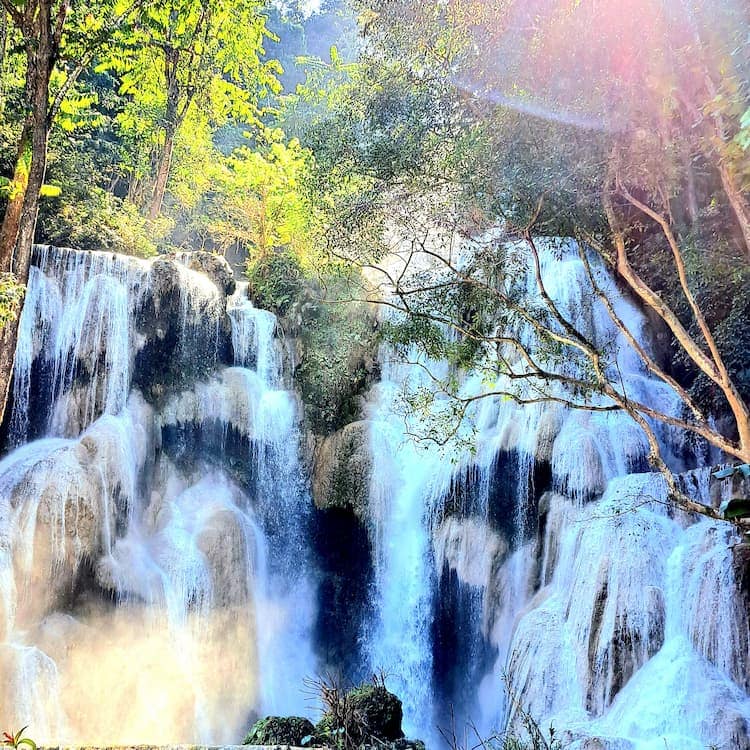
Kuang Si Waterfalls are some of the most amazing natural wonders I’ve had the privilege to witness.
Located about an hour southwest of Luang Prabang and is accessible by taxi, though many travelers prefer to rent scooters and ride out there themselves.
The ride there is quite beautiful and gives you a chance to see the Laos countryside and pass through a few Laotian villages.
Before getting to the actual waterfalls, there is an admission area that you must go to first. An entry ticket costs roughly 25,000 kip (About $1 at the time of writing) and an electric cart will ferry you up to the entrance to the waterfalls, from there it is a walk along paths through the jungle.
The main waterfall is an awe-inspiring sight. The three-tiered waterfall is said to be 60 meters high and its remarkable turquoise-blue water cascades over the falls and flows into several swimmable pools.
The best spot to swim is not below the waterfalls but above them. On each side of the main fall is a marked path. The climb is slightly tricky but it will lead you to a series of shallow pools of crystal clear water, akin to looking at glass.
The current is very slow here so you don’t need to be concerned about flowing over the side of the waterfall, instead just enjoy the beauty of this spot. It is quite something and has to be experienced.
The Sun Bears
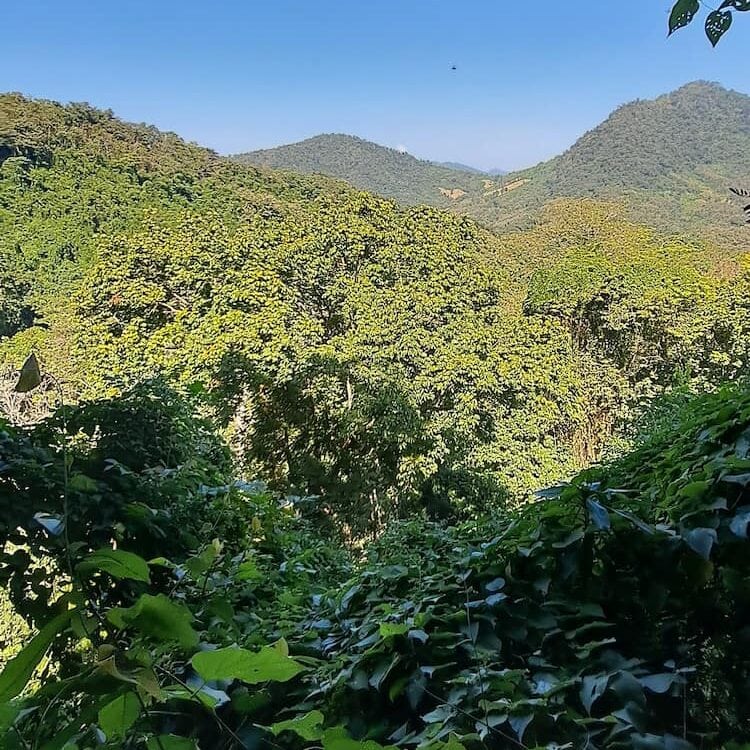
Part of the Kuang Si Falls area is also the Luang Prabang Bear rescue center. If you visit the falls you will also pass by the rescue centre as it is located in between the entry to the falls and the waterfalls themselves.
I was most surprised to come across the center as I hadn’t read about it anywhere nor been told about it.
The center encompasses a large fenced-off area and has several Asian sun bears who have been rescued. There is plenty of information on site about the bears and the threats they face. I would highly recommend spending some time here.
The opportunity to observe these animals came as a surprising one but was a highlight of my day.
Luang Prabang Bowling Alley
Laos can be a random place at times, providing moments or scenes that confuse even the most well-traveled. The Luang Prabang Bowling Alley is an example of the randomness of Laos.
Unlike other bowling alleys around the world, this isn’t a place to take the family. It is where the backpackers looking for a drink are directed to.
Why and how a Bowling alley of all places became a popular hangout spot for backpackers, I have no idea. It is a place to dance, a place to have a few bottles of the ever-reliable beer Lao, and of course, have a few rounds of bowling.
It is completely random and yet also brilliantly fun. The place also has an archery range, because, of course, it does. Who said drunk backpackers and arrows don’t mix?
Alongside waterfalls and cultural sites, this is a strange aspect to mention, and yet it is a wonderful part of Luang Prabang. It speaks to the hilariously random side of Laos that many backpackers to this wonderful country can attest to.
How to Get to Luang Prabang
There are several ways to reach Luang Prabang, depending on where you are coming from.
Luang Prabang does have an international airport connecting it with Vietnam, Cambodia, and Thailand. However, the price of these airfares can be quite expensive compared to the other means of transport on offer.
If you are coming from Northern Thailand, taking the slow boat from Huay Xai after crossing the border is a good option. The journey takes about two days as you slowly meander down the Mekong.
For those coming from Northern Vietnam, unless you want to pay out for a flight, you have a 24-hour night bus ahead of you. Good luck.
If you are in Vientiane or Vang Veng there are two options.
You can take the infamous van ride through the mountains. A journey on winding and curvy mountain roads, which are occasionally paved but generally gravel, dirt or just rivers of sand. You may be required to get out and push through the sandy sections.
The second option is on Laos’ newly built high-speed train that will speed you through to Luang Prabang at high speed and for a pretty reasonable price. Sit back relax, enjoy the scenery outside the window, and arrive at your destination a good three hours before everyone else.
Luang Prabang is a town packed with history and culture, surrounded by natural beauty and yet also has its quirks and personality. I remember it fondly as a place where I enjoyed good coffee while I sat and watched life go by.
A place whose natural beauty left me in awe. A place where traditional culture has not just survived but continues to thrive. A place where I danced and attempted archery while more than slightly inebriated.
Luang Prabang will live long in my memory and I’m sure it will have a similar impact on you.
Inspire your next adventure with our articles below:
Author Bio: Ben Hallam is from New Zealand and is currently based in Bali,Indonesia. He is an experienced backpacker and adventure motorcyclist awaiting his next adventure.
- Travel Guide to Colorado - April 26, 2024
- Travel Guide to Croatia - April 26, 2024
- Top 10 Things to Do in Ireland - April 25, 2024

